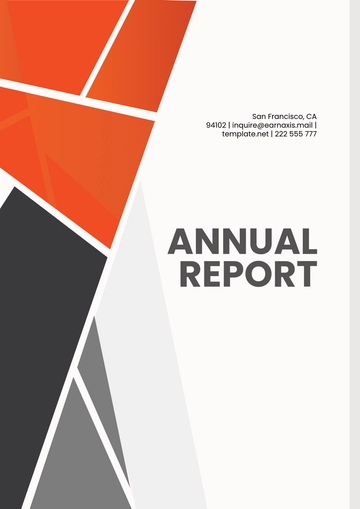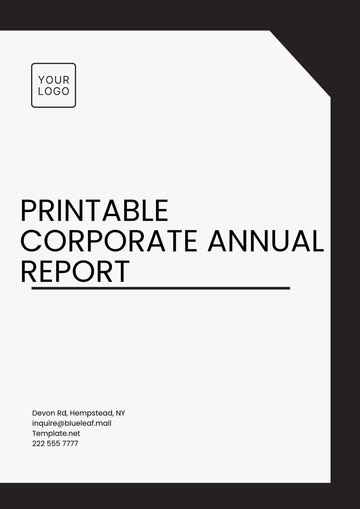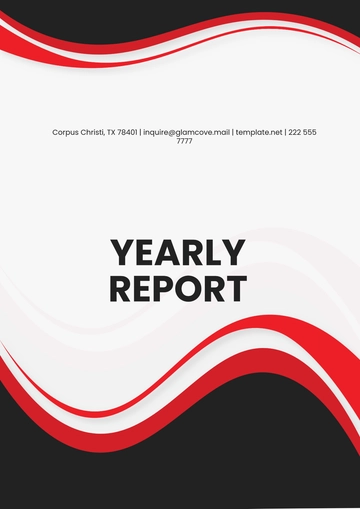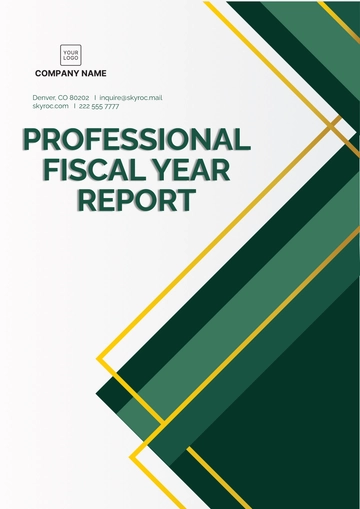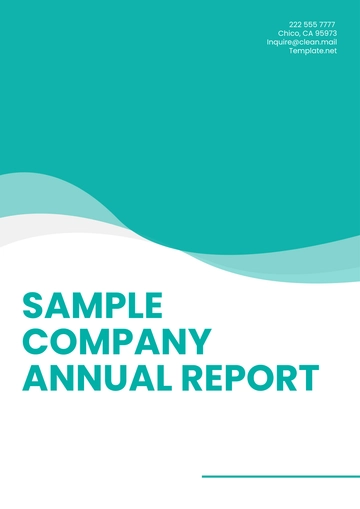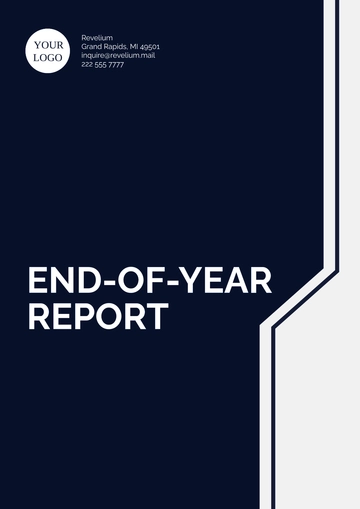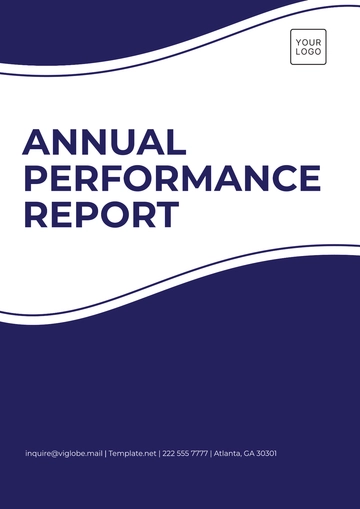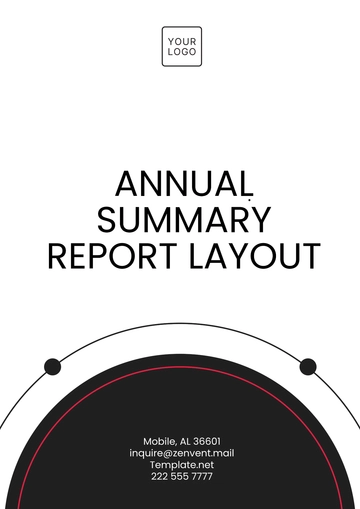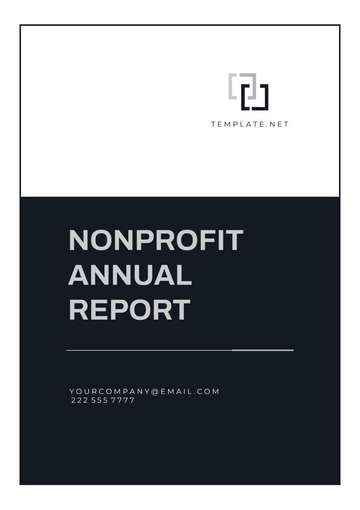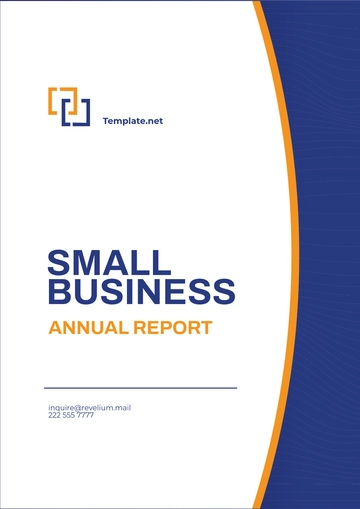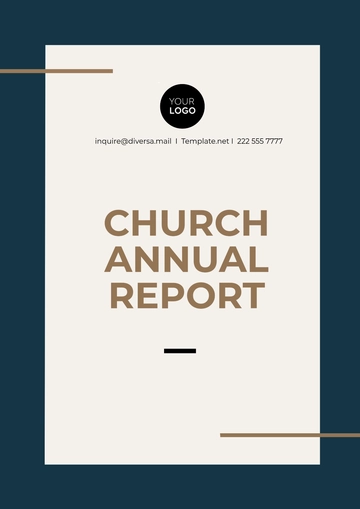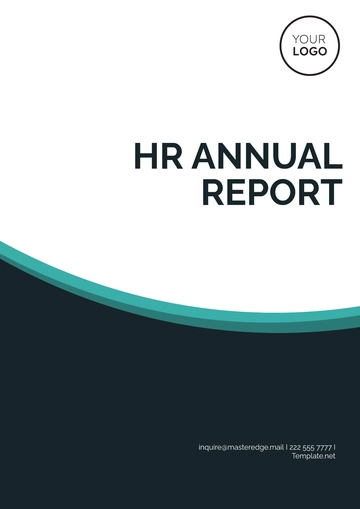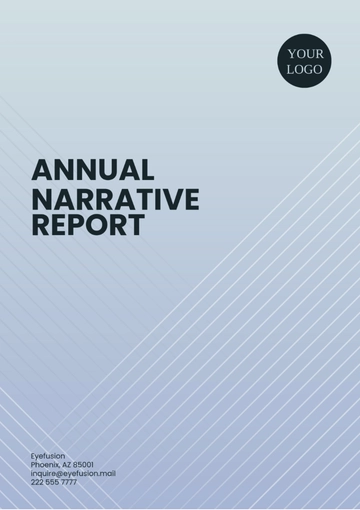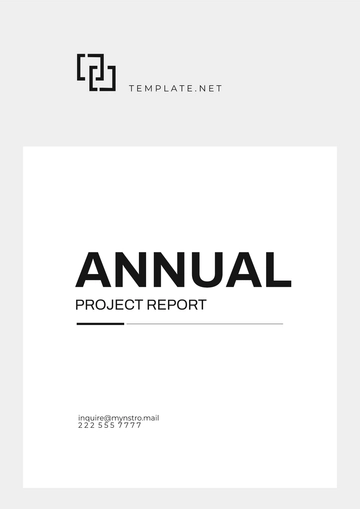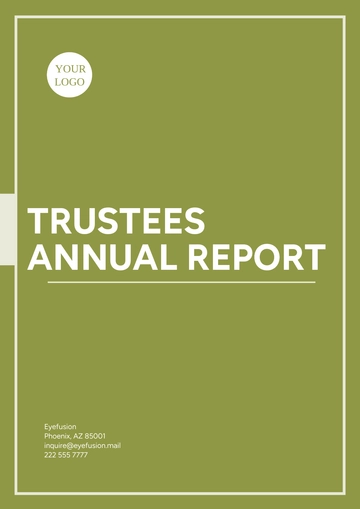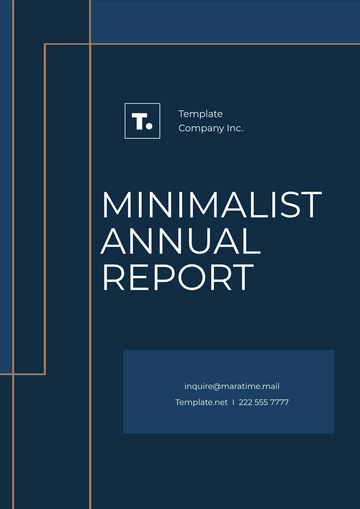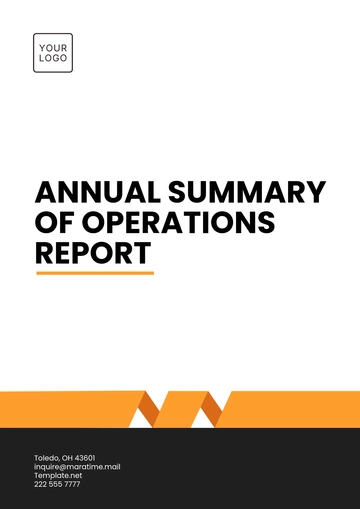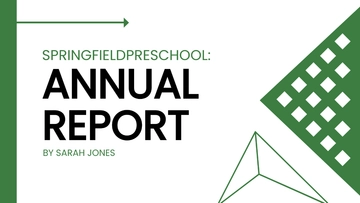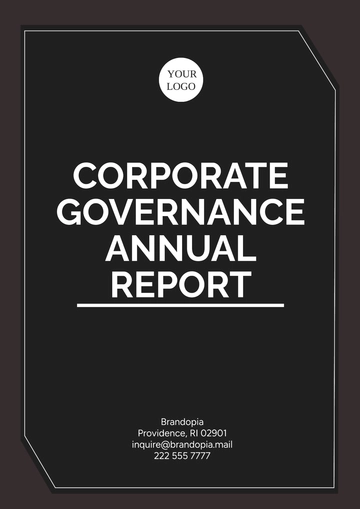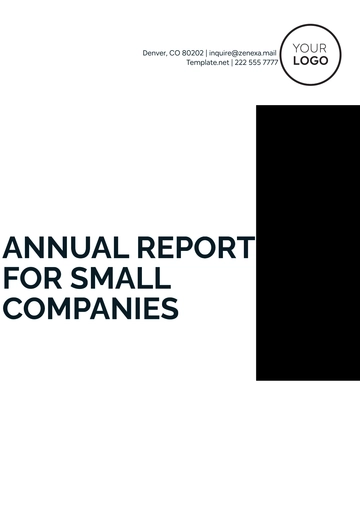Free Restaurant Revenue Report
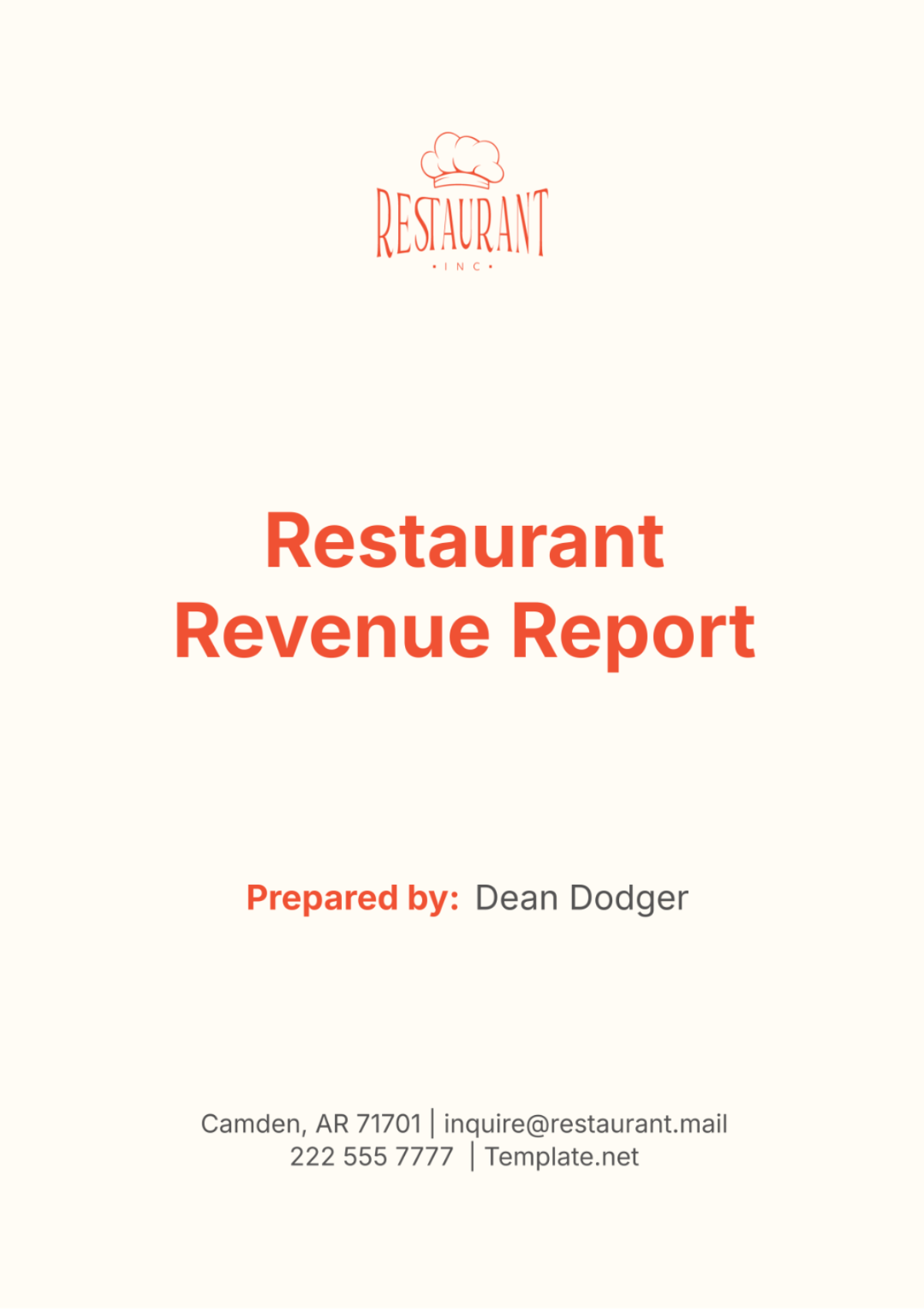
I. Introduction
The purpose of this report is to analyze the revenue performance of [Your Company Name] over the past fiscal year. This comprehensive review covers various aspects of the restaurant's revenue streams, including monthly earnings, revenue breakdown by product categories, customer demographics, and overall financial health. The report aims to provide insights into the factors driving revenue growth and identify areas for potential improvement.
II. Monthly Revenue Analysis
A. Introduction
This section presents a detailed analysis of the monthly revenue generated by [Your Company Name]. By examining the monthly revenue trends, we can identify seasonal patterns and key periods of high and low sales, which will help in planning future marketing and operational strategies.
B. Monthly Revenue Data
Month | Revenue ($) |
|---|---|
January | 45,000 |
February | 48,000 |
March | 50,000 |
April | 52,000 |
May | 60,000 |
June | 58,000 |
July | 62,000 |
August | 64,000 |
September | 55,000 |
October | 53,000 |
November | 57,000 |
December | 70,000 |
C. Analysis
The data reveals that [Your Company Name] experienced its highest revenue in December, totaling $70,000. This peak can be attributed to the holiday season, which typically sees increased dining out and catering orders. May through August also showed strong performance, with revenues consistently above $60,000, possibly due to the summer season attracting more customers. The lowest revenue months were January and February, with $45,000 and $48,000 respectively, which may be influenced by post-holiday spending slowdowns.
III. Revenue Breakdown by Product Categories
A. Introduction
Understanding the revenue contribution of different product categories helps identify which items are most profitable and popular among customers. This section breaks down the total revenue into various product categories such as food, beverages, and special events.
B. Revenue Breakdown Data
Category | Revenue ($) | Percentage (%) |
|---|---|---|
Food | 500,000 | 68.5 |
Beverages | 150,000 | 20.5 |
Special Events | 80,000 | 11.0 |
C. Analysis
The majority of the revenue, 68.5%, comes from food sales, indicating that [Your Company Name]’s primary business driver is its food offerings. Beverages account for 20.5% of the revenue, highlighting a significant contribution from drinks, including both alcoholic and non-alcoholic options. Special events, which include catering services and private dining bookings, contribute 11% to the total revenue. This indicates a potential area for growth if marketing and service strategies are enhanced to attract more event-based business.
IV. Customer Demographics
A. Introduction
Analyzing customer demographics provides valuable insights into the target audience and helps tailor marketing efforts to better meet the needs and preferences of the clientele. This section examines the age, gender, and spending behavior of the customers who frequent [Your Company Name].
B. Customer Demographics Data
Demographic | Percentage (%) |
|---|---|
Age 18-25 | 15 |
Age 26-35 | 30 |
Age 36-45 | 25 |
Age 46-60 | 20 |
Age 60+ | 10 |
Male | 55 |
Female | 45 |
C. Analysis
The data indicates that the largest customer age group is 26-35 years, making up 30% of the clientele, followed by 36-45 years at 25%. This suggests that the restaurant appeals primarily to young and middle-aged adults. The gender distribution shows a slight male majority at 55%, compared to 45% female customers. These insights suggest that marketing strategies should focus on appealing to young professionals and middle-aged patrons, potentially through promotions and menu items that cater to their preferences.
V. Revenue from Special Events
A. Introduction
Special events represent an important revenue stream for [Your Company Name]. This section delves into the revenue generated from various special events such as corporate events, weddings, and private parties.
B. Special Events Revenue Data
Event Type | Revenue ($) | Percentage (%) |
|---|---|---|
Corporate Events | 40,000 | 50 |
Weddings | 25,000 | 31.25 |
Private Parties | 15,000 | 18.75 |
C. Analysis
Corporate events account for the largest portion of special events revenue at 50%, followed by weddings at 31.25%, and private parties at 18.75%. This breakdown indicates that corporate clients are a significant source of revenue for the restaurant's event services. Strategies to attract more corporate bookings, such as offering competitive packages and personalized services, could further enhance this revenue stream. Additionally, expanding marketing efforts for weddings and private parties could help balance and grow the overall special events revenue.
VI. Conclusion
A. Summary of Findings
The analysis of [Your Company Name]'s revenue over the past fiscal year reveals several key insights:
Monthly Revenue Trends: Peak revenue months were December and the summer months (May-August), while the lowest were January and February.
Product Categories: Food sales dominate the revenue, followed by beverages and special events.
Customer Demographics: The primary customer base consists of young to middle-aged adults, with a slight male majority.
Special Events: Corporate events contribute the most to special events revenue, indicating a strong market presence in this area.
B. Recommendations
Based on these findings, the following recommendations are proposed to further enhance revenue growth:
Seasonal Promotions: Develop targeted marketing campaigns for the low-revenue months (January and February) to attract more customers during these periods.
Menu Innovation: Continually innovate the food and beverage offerings to maintain and increase customer interest and spending.
Customer Engagement: Tailor marketing strategies to the predominant customer demographics, focusing on the preferences of young professionals and middle-aged adults.
Special Events Expansion: Enhance the marketing and service offerings for corporate events, weddings, and private parties to maximize revenue from these high-potential segments.
C. Future Outlook
Moving forward, [Your Company Name] should leverage the insights from this revenue report to refine its business strategies and capitalize on growth opportunities. By addressing the identified areas for improvement and building on existing strengths, the restaurant can enhance its financial performance and continue to provide exceptional service to its customers.
VII. Appendices
A. Detailed Financial Statements
Included in this section are the detailed financial statements for [Your Company Name], providing a comprehensive view of the restaurant's financial health over the past fiscal year.
B. Additional Data
Any additional data or supporting documents referenced in this report are included here for further reference and analysis.
VIII. Contact Information
For any further inquiries or assistance, please contact us:
Company Name: [Your Company Name]
Email: [Your Company Email]
Address: [Your Company Address]
Phone: [Your Company Number]
- 100% Customizable, free editor
- Access 1 Million+ Templates, photo’s & graphics
- Download or share as a template
- Click and replace photos, graphics, text, backgrounds
- Resize, crop, AI write & more
- Access advanced editor
Dive deep into your restaurant's financial performance with Template.net's Restaurant Revenue Report Template. Effortlessly track and analyze your revenue streams, identifying trends and opportunities for growth. With our intuitive AI editor tool, customization is a breeze, allowing you to tailor the report to your specific needs. Gain valuable insights and make informed decisions to drive your restaurant's success.
You may also like
- Sales Report
- Daily Report
- Project Report
- Business Report
- Weekly Report
- Incident Report
- Annual Report
- Report Layout
- Report Design
- Progress Report
- Marketing Report
- Company Report
- Monthly Report
- Audit Report
- Status Report
- School Report
- Reports Hr
- Management Report
- Project Status Report
- Handover Report
- Health And Safety Report
- Restaurant Report
- Construction Report
- Research Report
- Evaluation Report
- Investigation Report
- Employee Report
- Advertising Report
- Weekly Status Report
- Project Management Report
- Finance Report
- Service Report
- Technical Report
- Meeting Report
- Quarterly Report
- Inspection Report
- Medical Report
- Test Report
- Summary Report
- Inventory Report
- Valuation Report
- Operations Report
- Payroll Report
- Training Report
- Job Report
- Case Report
- Performance Report
- Board Report
- Internal Audit Report
- Student Report
- Monthly Management Report
- Small Business Report
- Accident Report
- Call Center Report
- Activity Report
- IT and Software Report
- Internship Report
- Visit Report
- Product Report
- Book Report
- Property Report
- Recruitment Report
- University Report
- Event Report
- SEO Report
- Conference Report
- Narrative Report
- Nursing Home Report
- Preschool Report
- Call Report
- Customer Report
- Employee Incident Report
- Accomplishment Report
- Social Media Report
- Work From Home Report
- Security Report
- Damage Report
- Quality Report
- Internal Report
- Nurse Report
- Real Estate Report
- Hotel Report
- Equipment Report
- Credit Report
- Field Report
- Non Profit Report
- Maintenance Report
- News Report
- Survey Report
- Executive Report
- Law Firm Report
- Advertising Agency Report
- Interior Design Report
- Travel Agency Report
- Stock Report
- Salon Report
- Bug Report
- Workplace Report
- Action Report
- Investor Report
- Cleaning Services Report
- Consulting Report
- Freelancer Report
- Site Visit Report
- Trip Report
- Classroom Observation Report
- Vehicle Report
- Final Report
- Software Report
